in Foot and Ankle Surgery and Reconstruction
The programme to treat Achilles pain is designed to eccentrically load or stretch the tendon. In medical studies worldwide, this programme has been shown to provide excellent pain and symptom relief in many patients avoiding the need for surgery later on. Although these exercises are quite easy to follow it is advisable that patients try to get treated by an experienced physiotherapist who can supervise their rehabilitation. The physiotherapist may want to alter the therapy protocol and specific exercises depending on their patients progress, symptoms and capabilities.
Muscle aching and discomfort during the first 2 weeks is to be expected and in fact pain can be worse before it gets better however patients should not experience disabling pain. If after a few weeks, the exercises are getting “easy” then the exercise may be performed by wearing a backpack weighted with 5-10kgs (books etc) and gradually this weight can be increased as the patient feels the exercise is getting easier to load the tendon more.
Light jogging on flat ground may be started at 4-6 weeks during the regimen if it is not painful or only causes mild discomfort. Thereafter, activities may be introduced and gradually increased as long as no severe pain in the tendon is felt.
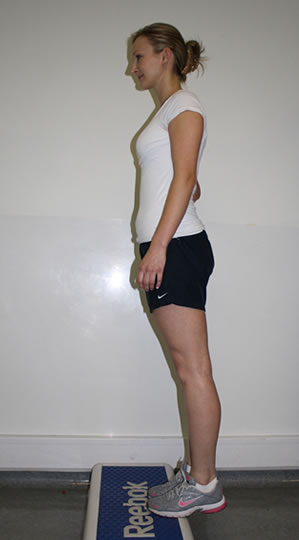 1. Stand on the step on the balls of your feet and keep your heels over the edge and your knees straight
1. Stand on the step on the balls of your feet and keep your heels over the edge and your knees straight
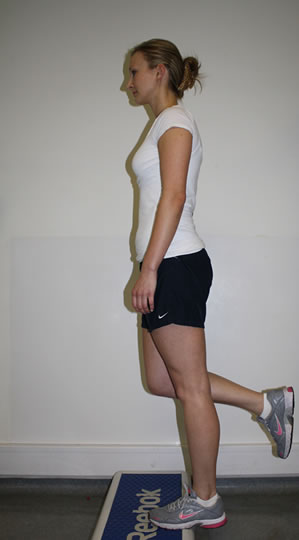 2. Lift your good leg off the ground
2. Lift your good leg off the ground
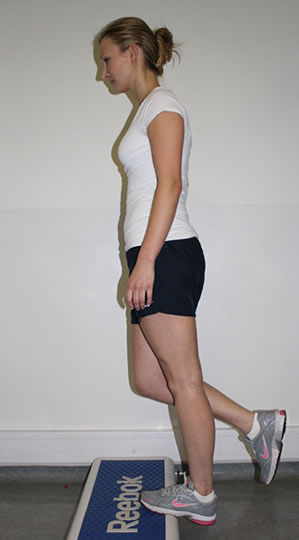 3. Lower your painful heel down below the step edge
3. Lower your painful heel down below the step edge
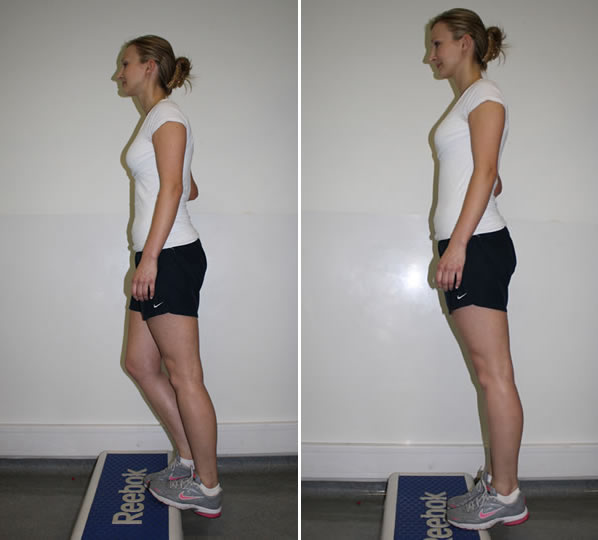 4 & 5. Put your good side onto step and use it to lift your painful side back to the level starting position then go back to the start
4 & 5. Put your good side onto step and use it to lift your painful side back to the level starting position then go back to the start
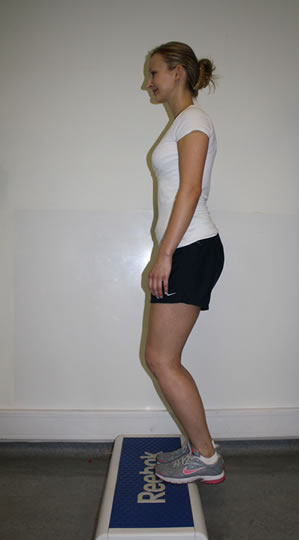 6. Stand on the step on the balls of your feet and keep your heels over the edge and your knees slightly bent
6. Stand on the step on the balls of your feet and keep your heels over the edge and your knees slightly bent
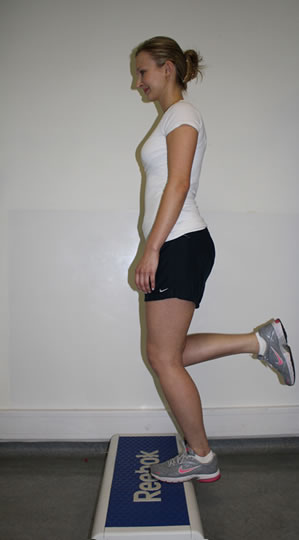 7. Lift your good leg off the ground
7. Lift your good leg off the ground
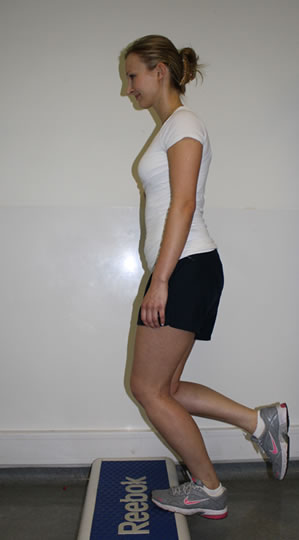 8. Lower your painful heel down below the step edge
8. Lower your painful heel down below the step edge
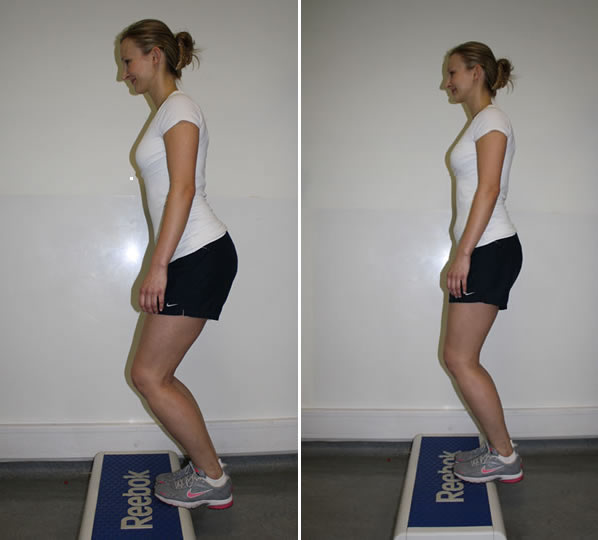 9 & 10. Put your good side onto step and use it to lift your painful side back up to the level starting position then go back to the start
9 & 10. Put your good side onto step and use it to lift your painful side back up to the level starting position then go back to the start
To be performed twice a day, every day, for 3 months…
|
Exercise 1, perform 15 times in a row |
} | ONE SET |
Repeat this SET of 30 exercises, 3 times for each session of therapy (90 in total per session).
Then every day you do 2 SESSIONS of exercises
If you find it too difficult to perform this protocol then try reducing the number of times you repeat exercises 1 and 2 in the first week or so. Instead of doing it 15 times each try 10 times or even 5 times each, then build up. But it is imperative you do your best to continue the protocol for 3 months.
Fahlstrom et al. Chronic Achilles tendon pain treated with eccentric calf-muscle training. Knee Surg Sports Traumatol Arthrosc. 2003;11:327-333
Alfredson H. Conservative Management of Achilles Tendinopathy: New Ideas. Foot Ankle Clin N Am. 2005;10:321– 329